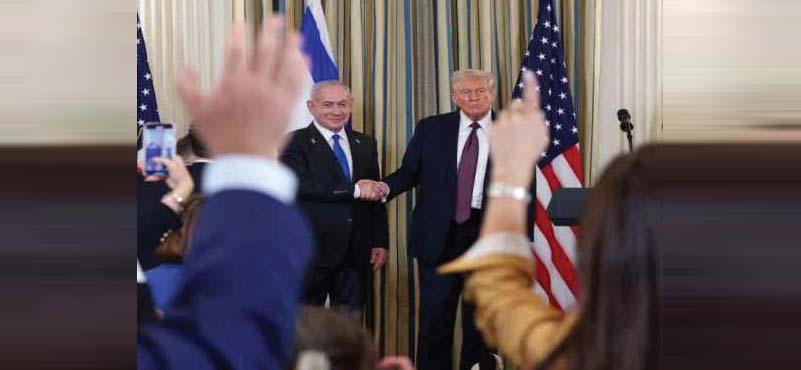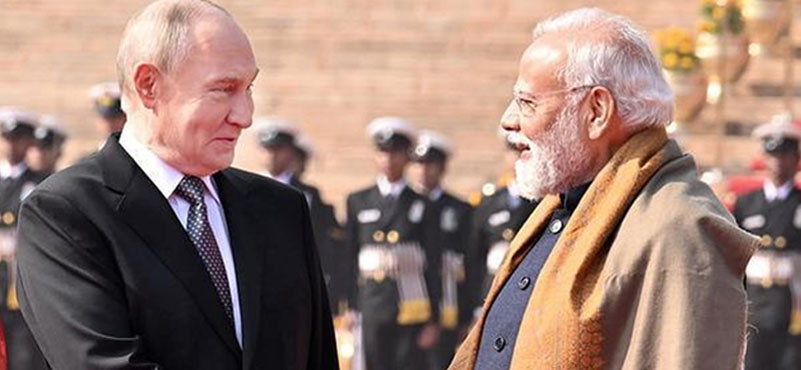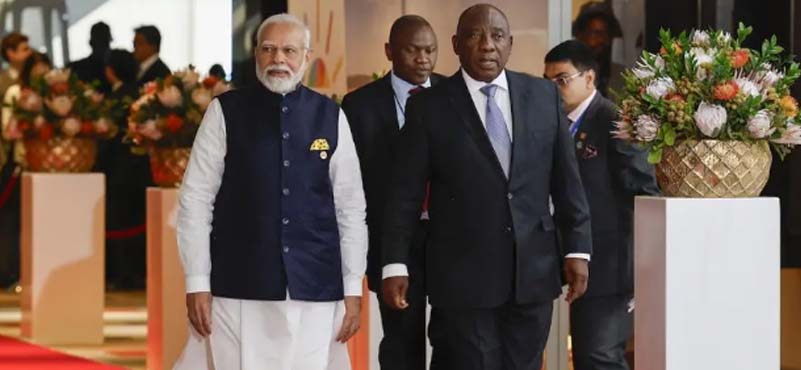The Pulse
After a little over two years of war a ceasefire which had eluded all previous attempts and seemed unachievable has been accomplished to end the devastating war between Israel and Hamas. The US secured support from key Arab and Muslim countries, and then forced an end to the war on both Israel and Hamas. Within days, the IDF withdrew most of its forces from Gaza and all 20 living Israeli hostages were released from captivity.
While the guns may have quietened but Gaza today lies in ruins far beyond what many dared to imagine. What Israel’s military aggression and destruction have inflicted on the Strip over the last two years will now slowly begin to be grasped, as media, aid organizations and observers will gain fuller access to Gaza.
Each side now has a narrative of triumph Hamas feels that its resistance was vindicated.
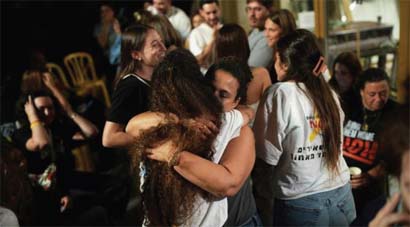 After the deal, senior Hamas leader Mahmoud Mardawi released a statement proclaiming that “Gaza—the graveyard of invaders—was victorious through its steadfastness and unity, imposing its will on the arrogant enemy.” He went on to state; “What the occupation failed to impose through extermination and starvation; it also failed to achieve at the negotiating table.” Though Israel feels that the agreement forces Hamas’s capitulation by freeing all the hostages, allowing the Israel Defence Forces (IDF) to maintain control over much of Gaza, and enforcing Hamas’s disarmament.
After the deal, senior Hamas leader Mahmoud Mardawi released a statement proclaiming that “Gaza—the graveyard of invaders—was victorious through its steadfastness and unity, imposing its will on the arrogant enemy.” He went on to state; “What the occupation failed to impose through extermination and starvation; it also failed to achieve at the negotiating table.” Though Israel feels that the agreement forces Hamas’s capitulation by freeing all the hostages, allowing the Israel Defence Forces (IDF) to maintain control over much of Gaza, and enforcing Hamas’s disarmament.
Ending military operations has been achieved but peace and stability demand more than the cessation of bombs and bullets, it requires that what Gazans endured should never be allowed to recur. Reparations, meaningful accountability, and a comprehensive reconstruction process must be front in any agreement. Without them, Gaza will remain a shell of suffering, an open wound in the conscience of humanity.
Rebuilding Gaza
The consequences of the Israeli campaign are staggering. According to Gaza authorities, over 67,000 Palestinians have been killed, thousands remain missing and more than 20,000 children are estimated to have died. The destruction of infrastructure is near-total: more than 90 percent of roads damaged, hospitals, schools and water systems shattered, and entire neighbourhoods erased.
Many neighbourhoods are still covered in rubble, soaked with contaminants, and littered with unexploded ordnance. Survivors return only to find nothing left: no walls, no roofs, no safe passage. International agencies estimate, optimistically, that rebuilding Gaza will cost as much as $40 billion and take at least a decade to give it some shape.
This is the world that now confronts Gaza’s survivors. Satellite images of the devastation reveal stories of loss, broken homes, collapsed hospitals, flattened marketplaces. Families sifting through ruins for any salvageable remnants buried beneath debris. Though a ceasefire is a welcome first step but the devastation demands justice, reconstruction, and a fundamental rethinking of what “peace” must mean.
The rebuilding process must be transparent and inclusive. Gaza’s people — not outsiders, need to guide the decisions about how their homes and cities are rebuilt. Arab States, international donors, the UN, and civil society must adopt oversight mechanisms to ensure that funds reach the intended beneficiaries.
Why the Uncertainty
President Trump’s achievement in delivering the initial phase of his twenty-point plan marks an important first step in moving the Gaza war towards an end. His ability to focus on this crisis has been decisive, especially in securing the agreement on a hostage and prisoner release and in getting both parties to take the first steps toward a ceasefire.
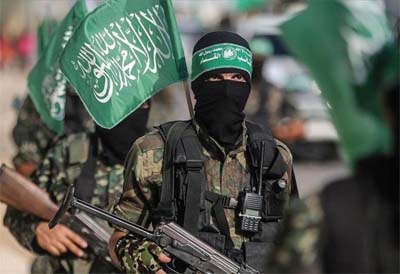 Yet this is only the beginning. Critical issues remain unresolved, these include, the question of Hamas’s disarmament, governance in Gaza and ultimately the pathway to Palestinian statehood. They will determine whether the settlement can be sustained in the long term.
Yet this is only the beginning. Critical issues remain unresolved, these include, the question of Hamas’s disarmament, governance in Gaza and ultimately the pathway to Palestinian statehood. They will determine whether the settlement can be sustained in the long term.
Hamas, has said unequivocally that disarmament “should be discussed within a comprehensive Palestinian national framework in which Hamas will be included” effectively relegating disarmament to endless consultations. The Hamas leader, Mousa Abu Marzouk, rejected the idea of disarmament, stating that the group would not disarm and insisted that “resistance is a legitimate right of the Palestinian people.”
Looking back in time, attempts to disarm Islamist militant groups have not been encouraging: the Taliban in Afghanistan, never disarmed despite multiple agreements that required them to do so. Hezbollah refused to comply with the disarmament provision in the 1989 Taif accord, which ended Lebanon’s 15-year civil war, and it has rejected every subsequent demand to disarm, including a 2006 UN Security Council resolution promulgated to end its war with Israel.
 Hamas will also want to position themselves within Gaza’s postwar governance structure and prevent any other group from becoming the dominant power. Apparently, Hamas has already deployed its fighters in areas where the Israeli military has withdrawn, dressing them mostly in civilian clothing, rebranding them as “Gaza Security Forces,” and seeking to assert control and settle scores with clans and tribes that have opposed the group.
Hamas will also want to position themselves within Gaza’s postwar governance structure and prevent any other group from becoming the dominant power. Apparently, Hamas has already deployed its fighters in areas where the Israeli military has withdrawn, dressing them mostly in civilian clothing, rebranding them as “Gaza Security Forces,” and seeking to assert control and settle scores with clans and tribes that have opposed the group.
The next phase of the framework constitutes a larger problem. Gaza was managed by a transitional Palestinian government, supported by regional and international actors until the Palestinian Authority (PA) could reform itself enough to govern. Although these ideas have been under consideration for many months, yet there has been no meaningful preparatory work towards equipping the PA to govern Gaza.
Next, who will staff the proposed “Board of Peace” and fill its necessary positions? Which international organizations will empower the body? There also needs to be a Palestinian representative body, as part of the process in other words, Gaza’s intended governing authority would must have a mandate from the population it is meant to serve.
In the absence of a UN Security Council resolution, the multinational force’s composition, mandate, and rules of engagement are entirely unclear. The situation in which at least four distinct military forces are present in Gaza simultaneously: Hamas fighters, Palestinian troops, international peacekeepers, and the IDF, apart from other armed groups and factions such as Palestinian Islamic Jihad can be a volatile operating environment.
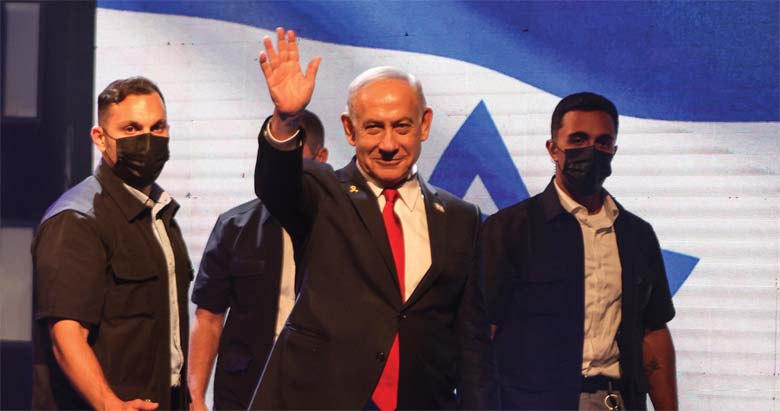
Finally, to achieve a more durable success, the US cannot confine its efforts only to the Israeli–Palestinian. The standoff with Iran, which continues to fester since June’s twelve-day war, now looms over any effort to achieve a wider regional peace.
Finally, some vital questions crop up. Can it happen again? If Hamas is not effectively disarmed, or even if they are, what is the guarantee that they don’t attempt another bloody October? If they do, what is the assurance that Tel Aviv will not launch another bloody war, this time even more ruthless than before? What are the guarantees that the devastation will not be repeated? The implementation of the peace accord, must include binding clauses against siege, starvation tactics, forced displacement and disproportionate use of force, on both sides. The rules of engagement must respect civilian lives. Till these questions are not addressed, the very foundation of the accord may be unsustainable.
Palestinian Self-Determination and Statehood
A still more fundamental impasse lies beyond these implementation challenges. The plan calls for Palestinian self-governance—an objective that Prime Minister Netanyahu has, for many years, explicitly ruled out. Israeli leaders may believe that what the plan calls a “pathway to Palestinian self-determination and statehood” will never come about, as it depends on reforms that the PA will not enact.
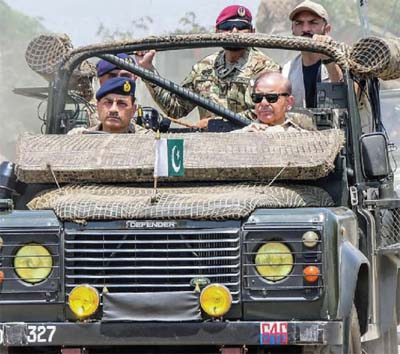 But the Arab countries who are now underwriting Gaza’s stabilization, a project that the UN has estimated will cost over $53 billion, expect delivery. The Saudi Foreign Ministry while welcoming the ceasefire released a statement emphasizing its belief that the plan must “initiate practical steps to achieve a comprehensive and just peace based on the two-state solution” and move toward establishing an independent Palestinian state “with East Jerusalem as its capital.” The statement underscored Saudi Arabia’s support for a resolution that includes a sovereign Palestinian state based on the pre-1967 borders.
But the Arab countries who are now underwriting Gaza’s stabilization, a project that the UN has estimated will cost over $53 billion, expect delivery. The Saudi Foreign Ministry while welcoming the ceasefire released a statement emphasizing its belief that the plan must “initiate practical steps to achieve a comprehensive and just peace based on the two-state solution” and move toward establishing an independent Palestinian state “with East Jerusalem as its capital.” The statement underscored Saudi Arabia’s support for a resolution that includes a sovereign Palestinian state based on the pre-1967 borders.
For two years, Netanyahu insisted on nothing other than “total victory.” That helped him reduce Hamas’s military capability, eliminate much of its leadership, and keep his governing coalition together. But the pressure was always Israeli hostages still in Gaza. Hence, for Israel to agree on a two-state solution seems unlikely. In a recent interview he accepted that ceding some territory to Palestinian authorities, as Israel did in Gaza, did not equate to creating an independent state, but he said it was “perfectly aligned with the reality” of circumstances on the ground. He added that “it’s a reality that if you had Palestinian governance that stopped teaching their kids to destroy the state of Israel … obviously, if you have that, and they educate them for peace, then I think you can have a different reality,” but said that it “could take generations” to get to that point.
Pakistan-Gaza Matrix
To stay on the right side of USA, Pakistan is willing to go to any length. Latest development is being described as “historic and unprecedented realignment,” in which, Pakistan plans to deploy approximately 20,000 troops as part of the proposed International Stabilisation Force (ISF) for Gaza. This likely deployment is a result of numerous secret meetings between Pakistan’s Army Chief, General Asim Munir, Israel’s Mossad, and the US Central Intelligence Agency (CIA) in Egypt earlier this month.
Not only the US, this development shows Pakistan as cozying up to Israel also. Other Islamic Nations like Iran, Turkey, and Qatar will surely oppose Pakistani presence in Gaza, viewing it as an anti-Hamas, and pro-Israel. On its own part Pakistan has suddenly emerged as the international peace keeper and provider. However, Pakistan may have bitten more than what it can chew, as the very presence of Pakistani troops will be viewed with the greatest suspicion from both sides. Also, there may be excesses committed which will eventually backfire. The image of Pakistani soldiers entering Gaza not as liberators but as enforcers of a Western-designed peace plan could be perceived as betrayal. Many Pakistanis, would consider this act as the Pakistani Army Chief being sold out to the US. Asim Munir’s may find himself in a very precarious position.
Without any doubt this move signifies strategic surrender by Pakistan. In the hope of improving its international image, Pakistan and specially Asim Munir may lose more than he will gain. India will continue to wait and watch; the more Pakistan is embroiled in Gaza and Afghanistan, the more dangerous it gets for them.
Conclusion
Postwar governance must be practical and cautious, while at the same time there can be no stability without trust. The road ahead is long. But this moment must be seized as a turning point. Gaza must become a testament to humanity’s capacity to rebuild from ruin.
The US and its international partners should tie specific incentives and sanctions to each phase of the agreement. These could include postwar reconstruction, economic aid, security guarantees, and long-term diplomatic promises offered as inducements for compliance. At the same time, they need to manage local expectations, including by reassuring or accommodating influential domestic actors within both Israel and the Palestinian territories.
While the conflict has halted, the challenge now is to put in place what is necessary to sustain the agreement, regardless of the resistance it may face in both Israel and the Palestinian territories. Having fought a brutal war, both sides need to understand that the deal cannot collapse while it will have to happen one step at a time.
The war may be over but the most demanding work begins now or to quote Robert Frost “there are miles to go before we sleep.”
ABOUT THE AUTHOR
 Maj Gen VK Singh, VSM was commissioned into The Scinde Horse in Dec 1983. The officer has commanded an Independent Recce Sqn in the desert sector, and has the distinction of being the first Armoured Corps Officer to command an Assam Rifles Battalion in Counter Insurgency Operations in Manipur and Nagaland, as well as the first General Cadre Officer to command a Strategic Forces Brigade. He then commanded 12 Infantry Division (RAPID) in Western Sector. The General is a fourth generation army officer.
Maj Gen VK Singh, VSM was commissioned into The Scinde Horse in Dec 1983. The officer has commanded an Independent Recce Sqn in the desert sector, and has the distinction of being the first Armoured Corps Officer to command an Assam Rifles Battalion in Counter Insurgency Operations in Manipur and Nagaland, as well as the first General Cadre Officer to command a Strategic Forces Brigade. He then commanded 12 Infantry Division (RAPID) in Western Sector. The General is a fourth generation army officer.
 Major General Jagatbir Singh was commissioned into 18 Cavalry in December 1981. During his 38 years of service in the Army he has held various command, staff and instructional appointments and served in varied terrains in the country. He has served in a United Nations Peace Keeping Mission as a Military Observer in Iraq and Kuwait. He has been an instructor to Indian Military Academy and the Defence Services Staff College, Wellington. He is a prolific writer in defence & national security and adept at public speaking.
Major General Jagatbir Singh was commissioned into 18 Cavalry in December 1981. During his 38 years of service in the Army he has held various command, staff and instructional appointments and served in varied terrains in the country. He has served in a United Nations Peace Keeping Mission as a Military Observer in Iraq and Kuwait. He has been an instructor to Indian Military Academy and the Defence Services Staff College, Wellington. He is a prolific writer in defence & national security and adept at public speaking.

